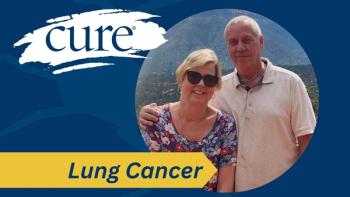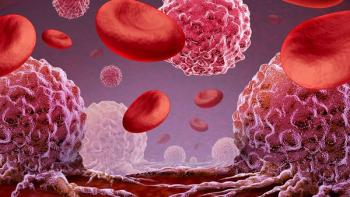
Three-Drug Regimen Is Safe for Newly Diagnosed Myeloma
A low rate of high-grade blood-related side effects following treatment with induction Dara-KRd and consolidation double transplant was discovered in a trial for patients with high-risk, newly diagnosed multiple myeloma.
Darzalex (daratumumab) Kyprolis (carfilzomib), Revlimid (lenalidomide) and dexamethasone — a combination known as Dara-KRd — followed by consolidation double transplant in patients with high-risk, newly diagnosed multiple myeloma proved to be safe and efficacious in the phase 2 IFM 2018-04 study, according to final results presented at the 2023 International Myeloma Society Annual Meeting.
The complete response (CR; percentage of patients whose disease completly disappeared after treatment) rate/stringent CR rate after the second autologous stem cell transplant (ASCT) was 81%, according to the protocol analysis. Additionally, the minimal residual disease (MRD) negativity rate, which describes a state in which there are no residual cancer cells detectable on a blood test, at the same time point was 94%.
Lead author Dr. Cyrille Touzeau, a hematologist in the Department of Hematology at the University Hospital of Nantes, Frances noted that response rates continuously improved during the study.
Touzeau also reported that the progression-free survival (the time from random assignment in a clinical trial to disease progression or death; PFS) rate was 86% at 24 months and 80% at 30 months. Additionally, the 24-month and 30-month overall survival (time from treatment until death of any cause; OS) rates were 94% and 91% respectively. In total, eight patients progressed, and seven died due to both disease progression and serious side effects
“Dara-KRd plus double transplant induced deep response rates and a high MRD negativity rate,” Touzeau said during a presentation on the findings. “…These favorable results are in accordance with the GMMG CONCEPT trial for our German Colleagues. The safety and efficacy profile of anti-CD38/KRd plus double transplant support this intensive approach for high-risk patients based on MRD positivity in our IFM phase 3 MIDAS trial.”
The trial included patients who were under 66 years old with newly diagnosed, transplant-eligible multiple myeloma that is high risk with an ECOG performance status of 0 to 2, meaning that they ranged from being able to perform all their daily tasks independently to needing some help with daily tasks. The trial’s primary end point was getting over 70% of patients to second transplant, with key secondary end points including safety, overall response rate, PFS, OS and stem cell collection.
The median patient age was 57 years (range, 38-65). A total of 8% of patients had extramedullary disease and all patients had high-risk cytogenetics. Additionally, 60% of patients had two or more high-risk cytogenetic abnormalities.
As of this update, 56% of patients were receiving ongoing treatment, and 42% had discontinued due to stem cell collection failure, progressive disease, side effects and withdrawal. Although stem cell collection originally took place after cycle six, the study protocol was later amended to take place after cycle three. It was reported that 16% of patients were unable to proceed to tandem transplant because of insufficient stem cell collection.
In terms of hematologic side effects, common any-grade events included neutropenia (48%), anemia (34%) and thrombocytopenia (36%); these were also the most common grade 3/4 events (44%, 22%, and 24%, respectively). Frequent any-grade non-hematologic side effects were infection (64%), gastrointestinal (GI) disorders (62%) and peripheral neuropathy (20%), with grade 3/4 side effects including infection (14%) and GI disorders (10%).
For more news on cancer updates, research and education, don’t forget to





